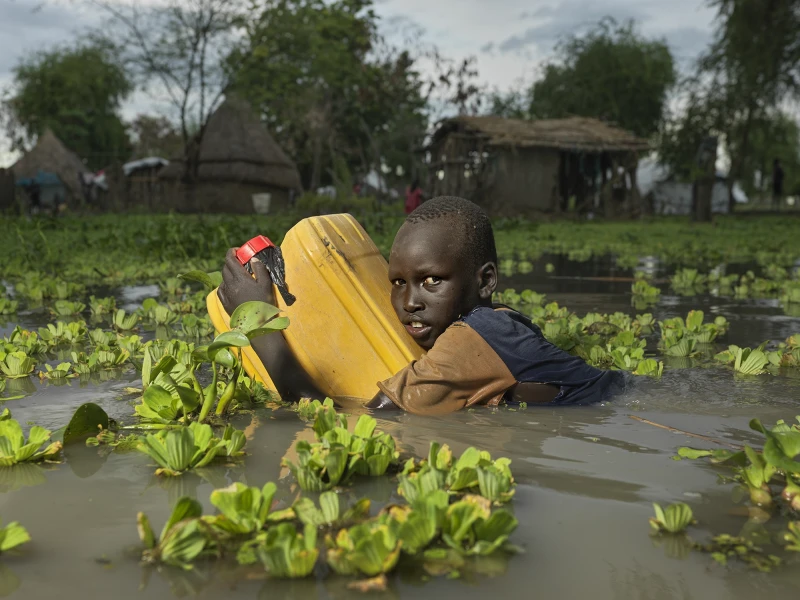Peter Caton: Unyielding Floods
October 23rd, 2025 | SideFor photographer Peter Caton, documentary work is as much about listening as it is about looking. His series Unyielding Floods follows communities in South Sudan living through years of rising water, where whole villages have been forced to adapt to a landscape that no longer recedes.
Made over four years, the project focuses on daily life, on how people rebuild, grow food and hold on to dignity in the face of permanent change. Through portraits and first-person accounts, it traces both human resilience and the global realities of climate crisis.
We spoke with Caton about the making of Unyielding Floods, how the work has evolved, and what it means to document life as it is reshaped by water.
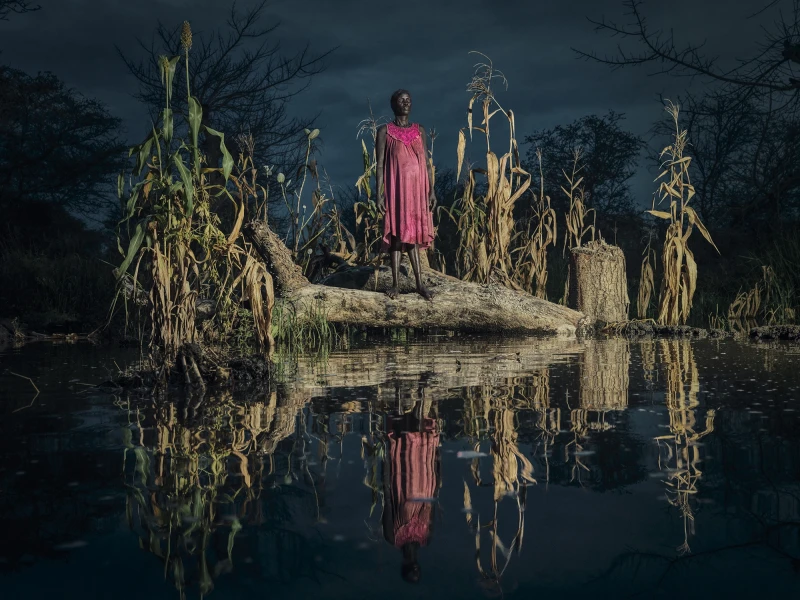
Side: To begin, can you introduce Unyielding Floods in your own words? What drew you to this story and how did it start?
Peter: During COVID, I was isolated and stuck in Kenya and I really did not know when my next job was coming from. This continued for almost half a year but my work anxiety was alleviated when I received the first of many South Sudan commissions. I was originally sent out to South Sudan by an NGO called Action Against Hunger to work on their COVID response but after completing that work, I was then asked to document the floods that I knew little about as it was my first trip to the country.
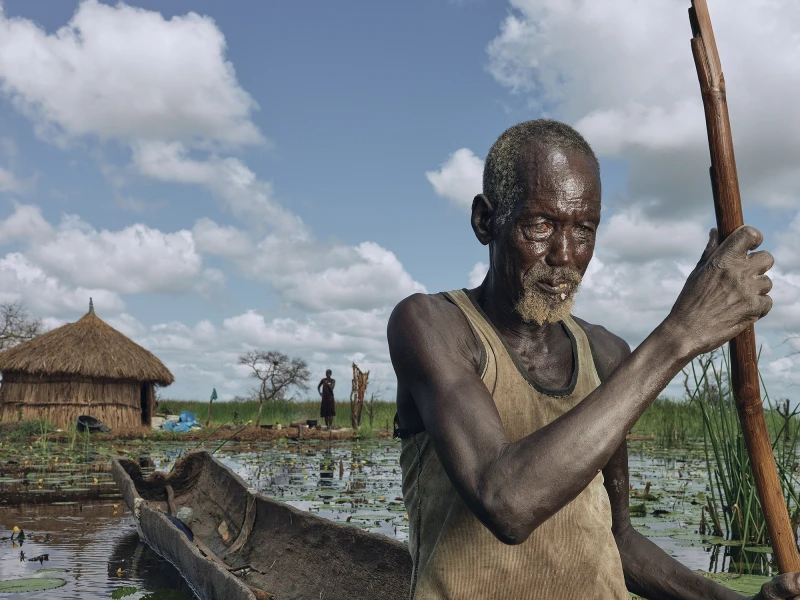
Side: The title carries both strength and relentlessness. How did it come about, and what does it mean to you now that the project is complete?
Peter: The floods won’t let up. In South Sudan many areas have stayed underwater season after season; “unyielding” signals that the water is persistent, not a single-event disaster. The work focuses on everyday adaptations and dignity- families, farmers and the wider communities, adjusting life to water, so the title also nods to human resilience.
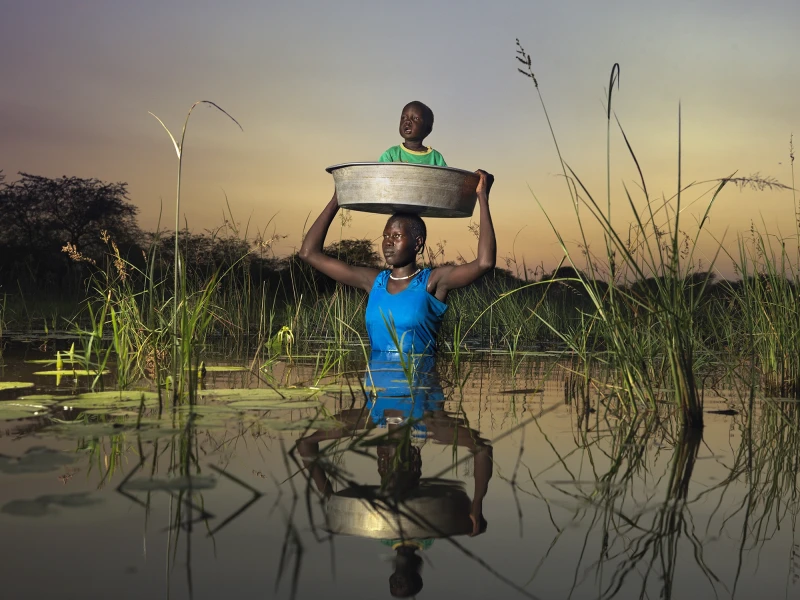
Side: The photographs sit somewhere between observation and reflection. How did you find the balance between documenting reality and expressing emotion?
Peter: I worked slowly over four years so the work holds both facts and feeling. In the field I photographed what unfolded, and I did not stage actions or ask anyone to re-enact events. At times I guided where someone stood for a portrait or to keep them in safe, clear light. The emotion comes later in the sequence and in pairing pictures with first-person testimonies, so reality leads and feeling belongs to the people pictured.
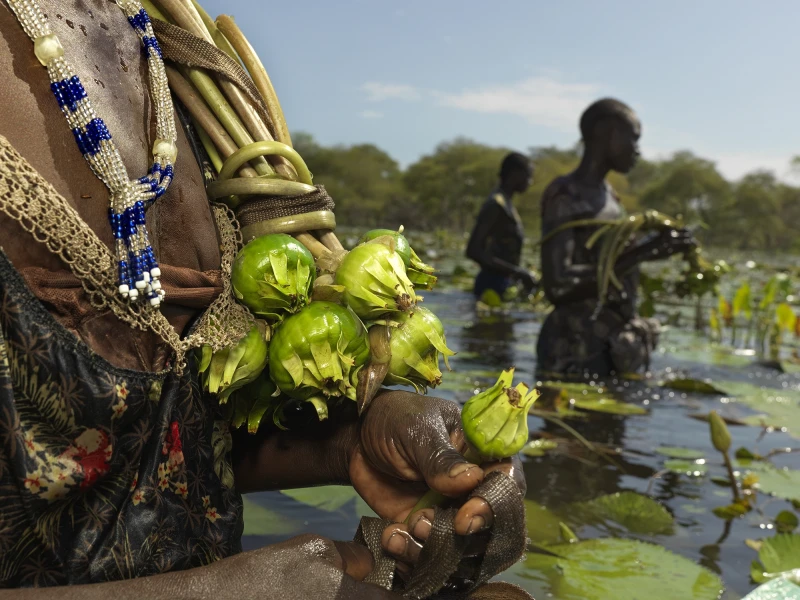
Side: Was there a particular moment or encounter that shifted how you saw the work, or changed your direction while photographing?
Peter: There was no single turning point. The work grew visit by visit and my focus changed each year. I saw hunger grow when people began collecting lily bulbs to eat. I also saw people adapt by making floating pontoons from compacted layers of grass, then dismantling damaged homes and rebuilding them on the pontoons. A real shift came when Action Against Hunger began teaching women to grow rice in standing floodwater. Until then the story was mostly about loss. That programme let me follow a more positive thread with skills being shared, crops taking root, and families finding ways to cope. From then on I tried to show hardship and response side by side.
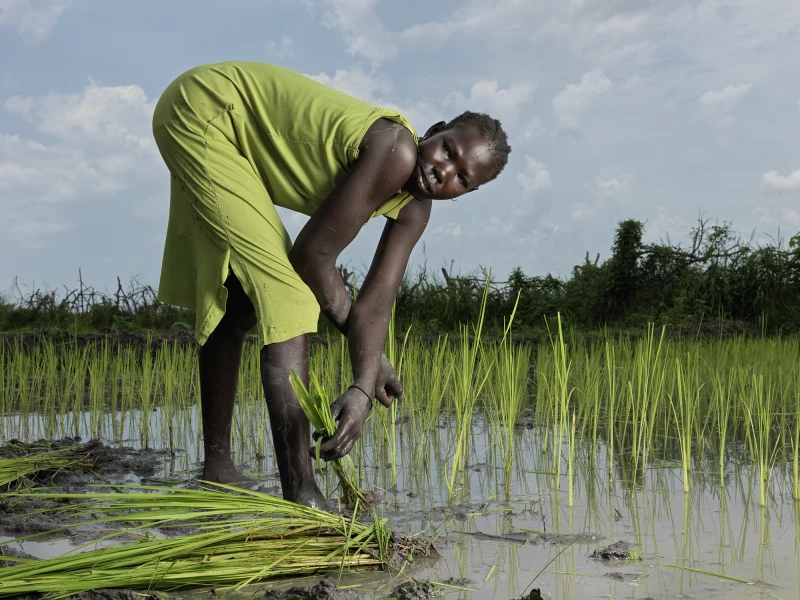
Side: How did you navigate your role within the landscapes and communities you photographed? Did you feel like an outsider, or part of the story?
Peter: At the beginning I was very much an outsider. Over time, people understood that my aim was to show the wider world the impact of the floods, and they saw value in cooperating. Many of the locations were extremely remote, with little or no journalistic coverage, so trust grew through repeated visits and straightforward explanations of what I was doing. When I returned over the years the reception was genuinely warm, and I was welcomed wherever I went. I often worked in partnership with Action Against Hunger and International Medical Corps, who granted access and introduced me to community leaders. Their field teams also assisted practically, including helping me position safe, clear light for portraits. By the end of some trips there were more people who wanted to be photographed than I could reasonably fit into a day, which speaks to the generosity with which the work was received.
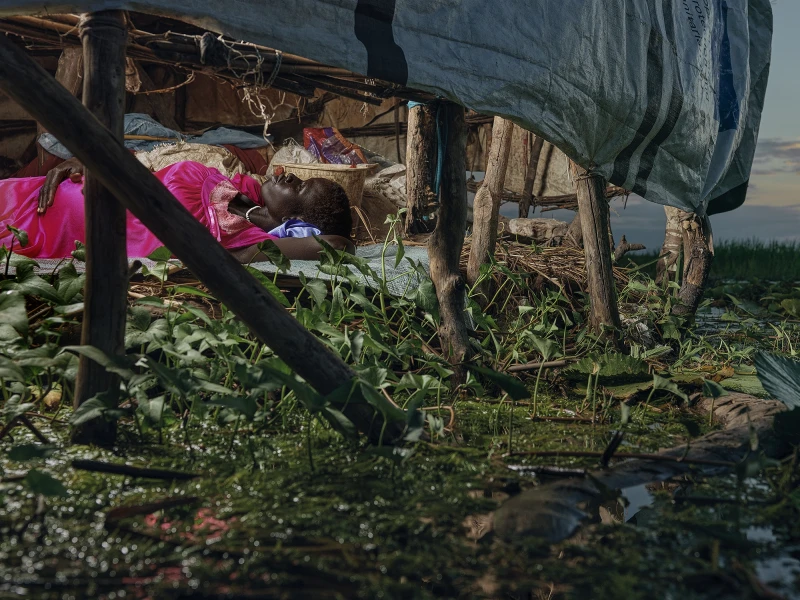
Side: What part did local voices, memories, or histories play in shaping the project?
Local voices shaped Unyielding Floods from the start. I didn’t arrive with a fixed script—I listened first. Community leaders, parents, and fishermen helped me understand what the water changed week by week: where homes once stood and the aid organisations on the ground guided interviews and helped me avoid mistakes or assumptions. Most captions come from people’s own words. We would record short testimonies after making a portrait, then read back the key points to check I’d got it right. If a detail was uncertain, I asked someone else in the village to confirm it. When I see someone elderly, I always ask about their memories of the flood. There are very few written records, so these conversations are vital to understand what was there before, how past floods compared, and what has been lost or saved.
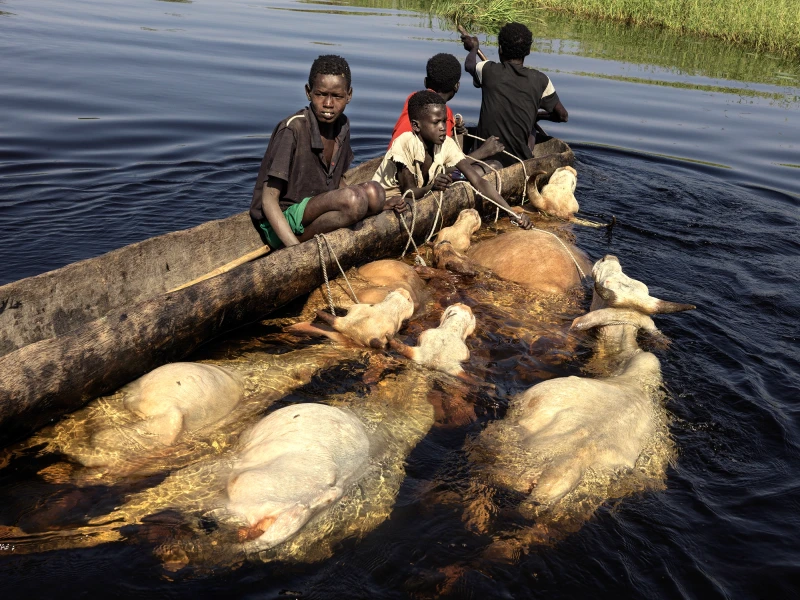
Side: The work speaks about water and weather, but also about human response and resilience. How did you handle that tension between the local and the global?
Peter: My approach was “people first.” Each image is tied to a place, a name, and what changed for them; captions use their own words. Then I open out to the wider context, how floods repeat over years, so it’s clear this isn’t just one storm.
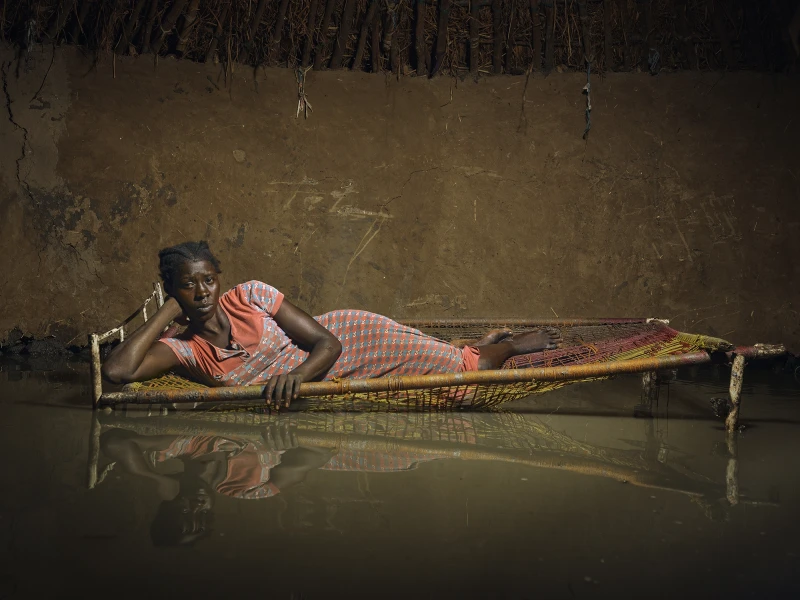
Side: This has been a long running photographic project, which is now published into a book. When editing the publication, how did you think about sequence and flow when putting the images together?
Peter: Dewi Lewis played a big part in shaping the book. He was very influential in the running order and his guidance helped a lot. I made a tight edit but kept some images in reserve to avoid repetition. Editing your own work is hard when you’ve lived with the subject for so long, so I asked for outside eyes. Friends and picture editors helped me cut the larger body of work down, and we repeated that process year by year as the project grew.
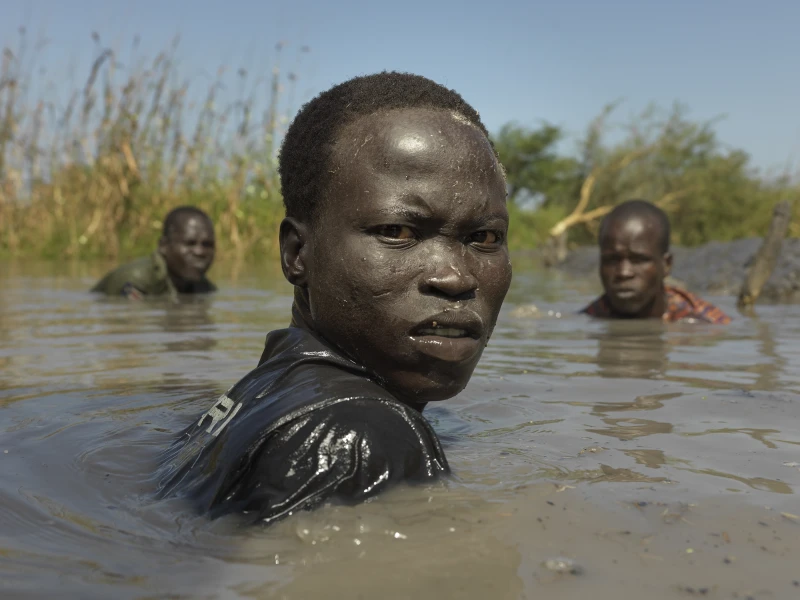
Side: What do you hope the work does now that it's out in the world? Is it a record, a warning, a space for empathy, or something else entirely?
Peter: It is a record, a warning, and a space for empathy. First, it is a record. Scientists suggest this may be the first permanent mass displacement of communities driven by climate change, so it matters to document who was there, what was lost, and how people adapted. Many of the places I photographed over the years were flooded last August and are now gone. People wonder if they will ever return, because the water only recedes through evaporation. The soil and clay in this region do not absorb water well, so the floods tend to sit.
It is also a warning. If we continue on the same path, what is happening in South Sudan will repeat elsewhere. Finally, it is a space for empathy. The work centres people’s words and daily life so that viewers meet families rather than an abstract crisis. My hope is that it leads to practical outcomes: better support, smarter adaptation, and attention from policymakers, while keeping dignity and local voices at the front.
Side: Thanks so much Peter this has been really illuminating!
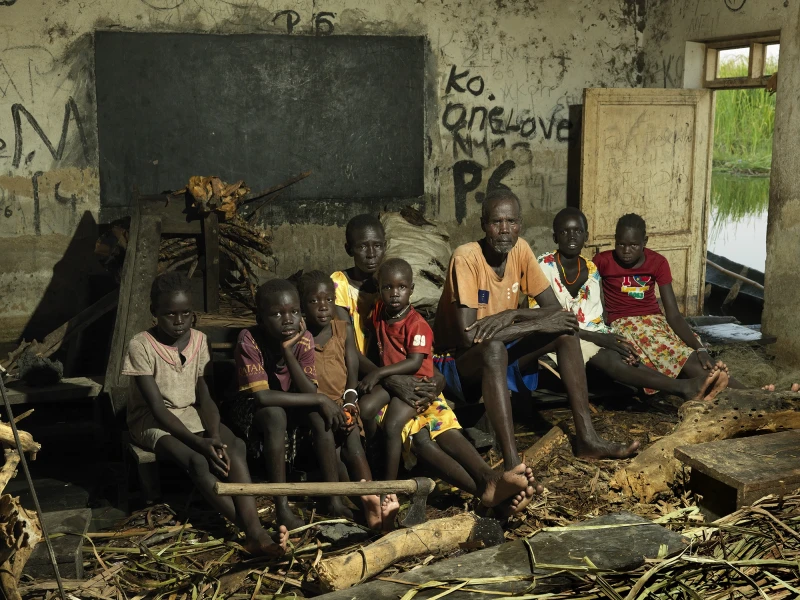
The publication " Unyielding Floods" is published by Dewi Lewis publishing. There title will be launched at The Photographers Gallery, London, on October 30th, 6.30-8pm. For more details on the launch visit: The Photographers Gallery Website
